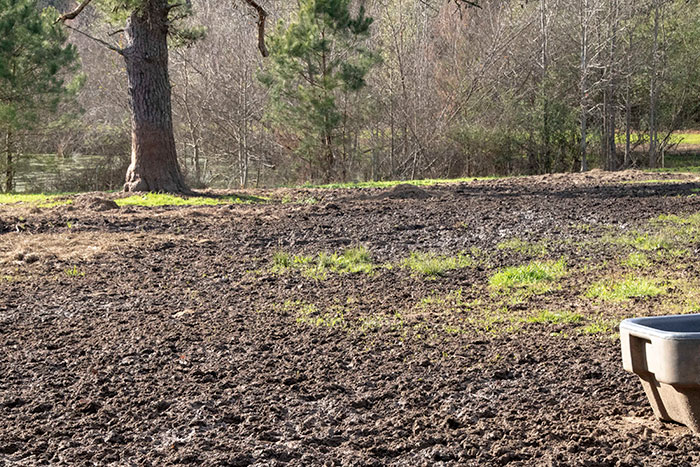Chewing some cud on mud |
| By Hay and Forage Grower |
|
|
 Many regions of the southern U.S. have experienced copious amounts of rain, which translates to copious amounts of mud in winter-feeding pastures. This creates problems for the cattle being fed and also the feeder, according to Kim Mullenix, extension beef specialist with Auburn University. “Excess mud can increase energy requirements because of the extra work to get to and from the feeding area,” Mullenix says. “Mud also reduces the insulating value of the animal’s hair coat.” The beef specialist cites some University of Nebraska research that showed 4 to 8 inches of mud can reduce feed intake by 10 to 15 percent. Though mud is often just a tolerated fact of life on many farms, Mullenix says there are several strategies that can be implemented to limit losses in animal performance, reduce stress on the feeder, and minimize damage to pastures. Here’s her list: 1. Head for higher ground. Identify areas in the pasture that are well drained and tend to dry out faster when feeding hay during the winter. Low-lying areas are more prone to water retention and will not dry out as quickly. 2. When checking cattle, minimize heavy wheel traffic and ruts. Use smaller vehicles such as an ATV (all-terrain vehicle) or check cattle on foot where possible. 3. Consider bale grazing. Setting out round bales prior to feeding on firm ground, then fencing them off with electric wire and moving to new bales one-by-one as needed may be a way to reduce mud. Several trials have noted that this works especially well in stockpiled fields where cattle can both graze and eat hay. 4. Construct a heavy-use feeding area. A heavy-use pad provides a feeding area for livestock that can reduce mud creation and erosion. Though concrete is the “Cadillac” construction base, a cheaper and effective material choice to reinforce frequent feeding areas is geotextile cloth and stone. Make sure the constructed area is large enough to be effective; a small pad may simply become surrounded by mud. While this option might not be available in the midst of the rain and mud, it’s something to consider for the future. |
